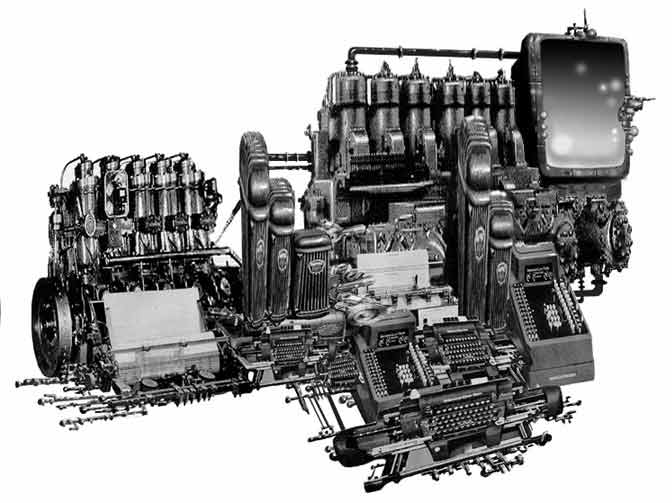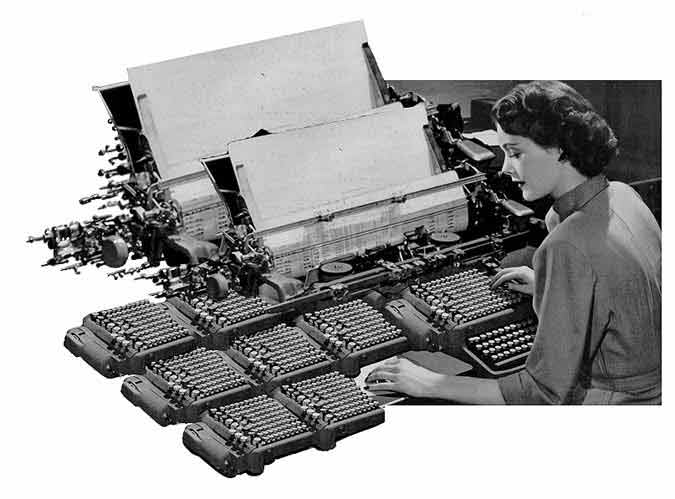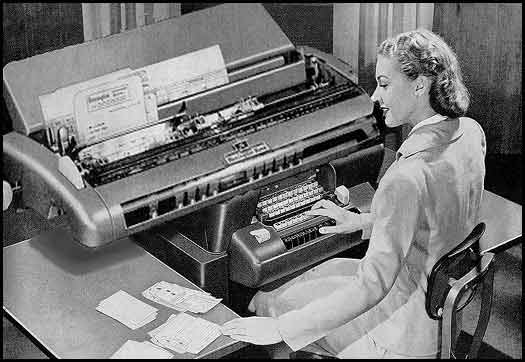


Pigdog Productions employs some of the most sophisticated Techno-art Engines of the 21st century, used by a staff of trained specialists at our esteemed Institute of Higher and Higher Learning.
The first important breakthrough was in 1911, by Rutherford Marks. His invention, the
Processor Engine, was based on a card punch system of integers and intergrals that were
cross-referenced into Logic Ingrams. This device enabled our creative
division to not only invent their unique visions, but then record and file them on paper
for future reference.
 Then in 1932, the first prototype of the Computator Engine was tested by Sam Zikevicius. This earlier machine was the first used worldwide to process large Bit-Links of hard data and create non-paper files on a new plastic polymer sheet. No longer based on punch hole methodology, the info-bits were magnetic Plus or Minus current switchers that reduced the entire world of ideas and images into a simple dualistic realm.  Of course, we need not explain the great significance of this breakthrough. Artists were finally freed to explore unfettered the hidden realms of other dimensional possibilites and this team of pioneers became known internationally as Specialists in Power Application. It was just a matter of time before the second, then third prototype refined this process into the famous Computator Engine No.7. The No. 7 is still used today at Pigdog Productions and has always, with minor adjusting to its Memoric Pneumatics, stayed several years ahead of all digital processors in the commercial personal computing markets. 
The No. 7 is primarily an image production engine, whereas the No. 11 and No. 12 are engines dedicated to ideas manifested as words, or text. All the stories created at Pigdog Productions are therefore products of these marvelous machines.  |